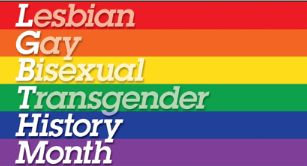BY ANDREA HOUSTON – In most Canadian history classes there is little to no queer history being taught. Lesbian, gay, bisexual and trans students should be learning about the many historical figures who have championed the gay rights movement in Canada and paved the way for equal rights.

When Black History Month started in Canada in the mid-’90s, students began learning about fascinating people who were not in their history books. For black students it instilled a sense of pride.
So why is there no Queer History Month in Canada?
(It may surprise you to learn that October is LGBT History Month in the United States and it’s February in the UK.)
In Canada, there’s certainly no shortage of queer leaders or historical turning points to learn about. Queer History Month would provide LGBT students with positive role models by celebrating the achievements of Canada’s queer community.
Currently there is a movement underway. The idea started on Twitter and is now a bustling project aiming to launch of a National Queer Histories Month this May.
(Full disclosure: I am a member of the Queer History Month working group.)
Join us tomorrow (March 4) at the 519 Church St Community Centre at 2:30pm for a town hall discussion of the plan. If you can’t join in person, the event will be live streamed. Follow @QueerHistory on Twitter. Join the Facebook group here.
For more information on the project, check out the website here. Or email the working group at lgbtqhistory@gmail.com.
Why is starting Queer History month important? Watch this:
 Why you can trust Xtra
Why you can trust Xtra


